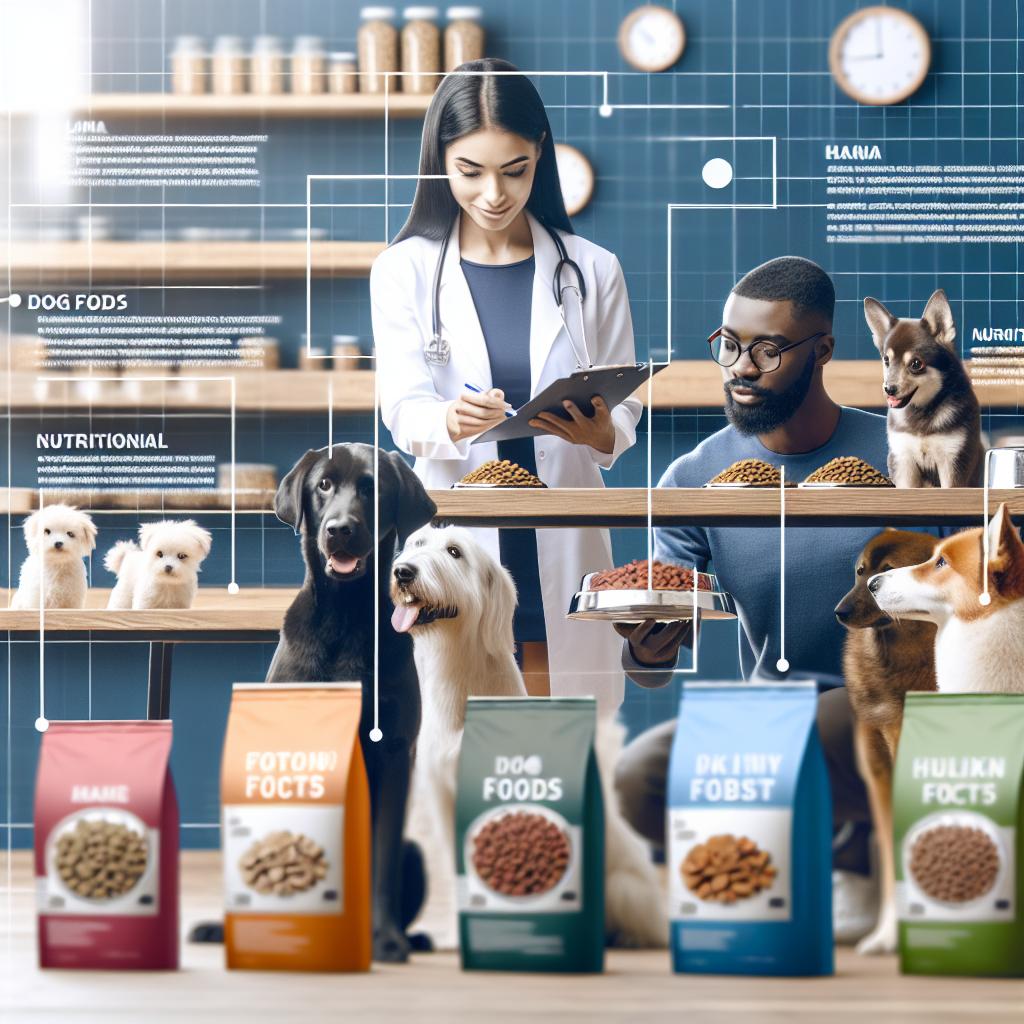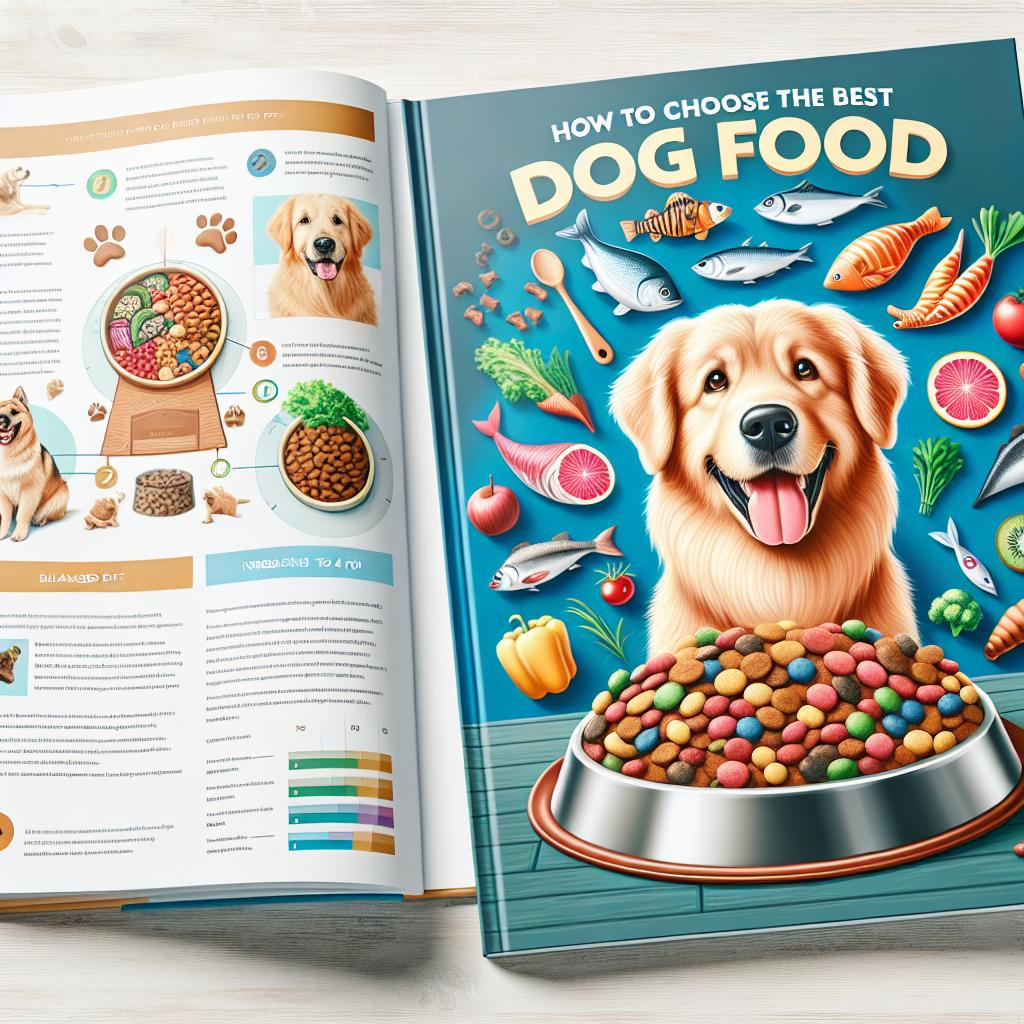When it comes to our furry companions, few decisions weigh as heavily on our hearts—and our wallets—as choosing the right dog food. With aisles upon aisles of colorful bags, shimmering cans, and enticing promises, navigating the world of pet nutrition can feel overwhelming. Yet, the quest for the best dog food is more than a mere shopping trip; it’s a journey toward optimal health, happiness, and longevity for our beloved pets. In this guide, we’ll unravel the mysteries of pet food labels, explore the various dietary needs of dogs at different life stages, and equip you with the essential tools to make an informed choice. Whether you’re a seasoned pet owner or welcoming a new pup into your family, understanding how to select the ideal diet for your dog is a vital step in nurturing a vibrant and fulfilled life together. Let’s embark on this culinary adventure for our four-legged friends!
Understanding Your Dog’s Nutritional Needs
Dogs, much like humans, have unique nutritional requirements that can vary based on age, size, breed, and activity level. To ensure a well-balanced diet, it’s essential to focus on the key components of dog food. Proteins are fundamental for growth and development, while fats provide energy and support healthy skin and coat. Additionally, carbohydrates serve as an energy source, aiding in digestion and immune function. Essential vitamins and minerals are equally important, as they contribute to various bodily functions and overall health.
When evaluating dog food options, consider the following factors:
- Life Stage: Puppies require different nutrients than adult or senior dogs.
- Ingredients: Look for high-quality sources of protein and avoid fillers like corn and soy.
- Dietary Restrictions: Some dogs may require grain-free or special dietary formulations.
- Brand Reputation: Opt for brands known for manufacturing quality pet food and that adhere to safety standards.
| Ingredient Type | Importance |
|---|---|
| Proteins | Supports growth, muscle development, and overall health. |
| Fats | Provides energy, supports cellular function, and enhances coat quality. |
| Carbohydrates | Fuel for energy and aids in digestive health. |
| Vitamins | Essential for immune function and metabolic processes. |
| Minerals | Key for bone health, nerve function, and hydration. |
Deciphering Labels: What to Look for in Ingredients
Understanding the ingredients in dog food can be overwhelming, but focusing on a few key elements can simplify the process. Start by seeking out high-quality animal proteins, such as chicken, beef, or fish, listed as the first ingredient. These proteins are crucial for your dog’s muscle development and overall health. Avoid foods that list meat by-products or fillers like corn and soy high on the ingredient list, as they provide little nutritional value. Look for sources of healthy fats, such as fish oil or chicken fat, which support healthy skin and coat. Additionally, consider the presence of whole grains like brown rice or oatmeal, which can provide essential carbohydrates and energy.
Next, keep an eye out for essential vitamins and minerals that promote overall well-being. Ingredients like sweet potatoes, carrots, and blueberries are fantastic for providing antioxidants and important nutrients. A well-rounded dog food should also include probiotics, which aid digestion and support gut health. Lastly, familiarize yourself with any synthetic additives; while some vitamins and minerals may be fortified, avoid foods with excessive artificial flavors, colors, or preservatives. Remember, a simple ingredient list is often a sign of quality; less is more when it comes to dog food.

Choosing the Right Form: Kibble, Wet Food, or Raw Diet?
When selecting the right food form for your furry friend, consider the unique needs and preferences of your dog. Kibble is often praised for its convenience and cost-effectiveness. It’s easy to store, measure, and serve, making it a popular choice for busy pet owners. Plus, dry food can help promote dental hygiene by reducing plaque and tartar buildup. However, some dogs may find kibble less appealing due to its texture and flavor profile.
On the other hand, wet food can be a delicious treat for dogs that enjoy a richer taste and moisture content. This form is beneficial for dogs that require additional hydration or have difficulty chewing. Many pet owners also appreciate the aroma of wet food, which can entice picky eaters. the raw diet has gained traction among dog enthusiasts who believe in providing a natural, species-appropriate diet. This option emphasizes fresh, uncooked ingredients, but it’s essential to handle raw food properly and ensure a balanced nutritional intake. Consider the following factors when making your choice:
| Food Type | Pros | Cons |
|---|---|---|
| Kibble |
|
|
| Wet Food |
|
|
| Raw Diet |
|
|

Tailoring Diets for Special Needs and Life Stages
When selecting the perfect dog food, it’s crucial to consider your pet’s specific needs dictated by age, activity level, and health conditions. Puppies, for instance, require a diet rich in protein and essential nutrients to support their rapid growth and high energy levels. Look for formulas that highlight ingredients such as chicken, lamb, and fish, as these are excellent sources of necessary proteins. Conversely, senior dogs benefit from diets lower in calories but high in fiber to aid digestion and manage weight, along with added joint support supplements like glucosamine and chondroitin.
Health conditions such as allergies, diabetes, or sensitive stomachs may also necessitate specialized formulations. For dogs with allergies, consider hypoallergenic diets that avoid common allergens like grains and certain meats. A veterinary prescription diet could be beneficial for those managing chronic health issues, providing targeted support through balanced nutrients. Here’s a simplified comparison of dietary needs:
| Life Stage/Condition | Key Nutritional Focus | Recommended Ingredients |
|---|---|---|
| Puppy | High protein, essential nutrients | Chicken, lamb, fish |
| Adult | Balanced nutrition, weight management | Beef, turkey, whole grains |
| Senior | Low calorie, joint support | Fish oil, glucosamine, antioxidants |
| Allergies | Hypoallergenic, limited ingredients | Novel proteins, grains-free options |
| Special Conditions | Targeted support | Veterinary prescription diet |
Q&A
Q&A: How to Choose the Best Dog Food for Your Pet
Q: Why is it important to choose the right dog food for my pet?
A: Selecting the right dog food is crucial for maintaining your pet’s overall health and well-being. Just like humans, dogs require a balanced diet to thrive. The right food can enhance their energy levels, support a healthy coat, improve digestion, and even prevent diseases. It’s all about providing the nutrients your furry friend needs to live their best life!
Q: What are the key nutrients I should look for in dog food?
A: A high-quality dog food should contain a balance of proteins, fats, carbohydrates, vitamins, and minerals. Proteins, from sources like chicken or fish, are essential for muscle health. Healthy fats, such as omega-3 and omega-6 fatty acids, contribute to a shiny coat and good skin health. Carbohydrates provide energy, while vitamins and minerals are vital for various bodily functions. Always look for a complete and balanced formula.
Q: How do I know if my dog has specific dietary needs?
A: Many factors influence a dog’s dietary needs, including their age, breed, size, and health conditions. Puppies, for instance, require different nutrients than senior dogs. If your dog has specific health issues, such as allergies or digestive problems, consult your veterinarian for tailored recommendations. They may suggest specialized diets or food sensitivities to consider.
Q: Are there any red flags to watch out for in dog food labels?
A: Absolutely! Be wary of foods that list vague ingredients, like “meat by-products” or ”animal fat.” It’s also important to avoid dog foods loaded with artificial preservatives, colors, and flavors. Check for high-quality sources of protein as the first ingredient, and steer clear of foods high in fillers like corn, soy, or wheat, which offer little nutritional value.
Q: How do I transition my dog to a new food?
A: Changing your dog’s diet should be done gradually to avoid digestive upsets. Start by mixing a small amount of the new food with the old food, gradually increasing the new food portion over a week or so. Monitor your dog’s response throughout the transition. If you notice any signs of discomfort or allergies, consult your veterinarian.
Q: What’s the best way to evaluate if the food is working for my dog?
A: Regular monitoring of your dog’s overall health will provide insights into whether the food is right for them. Consider their energy levels, coat condition, weight, and general demeanor. Healthy dogs typically have bright eyes, a shiny coat, and maintain a good weight. If you see any changes such as lethargy, digestive issues, or skin problems, it may be time to reassess the food or consult your vet.
Q: Can I feed my dog homemade food instead of commercial dog food?
A: Yes, many pet owners opt for homemade diets, but it’s essential to ensure they’re balanced and complete. If you choose to make your dog’s food at home, work with a veterinarian or pet nutritionist to formulate a diet that meets all their nutritional needs. Remember, not all human foods are safe for dogs, so be cautious and informed about what you include in their meals.
Q: Are there particular brands you recommend for high-quality dog food?
A: While I can’t endorse specific brands, look for products from reputable manufacturers that go through rigorous quality testing and adhere to standards set by organizations like the Association of American Feed Control Officials (AAFCO). Reading reviews and seeking recommendations from your vet or trusted dog owner communities can also guide you toward reliable options.
Q: How often should I change my dog’s food?
A: Dogs don’t need frequent changes in their diet unless there are specific health concerns. Sudden changes can lead to digestive issues, so it’s best to stick with a food that suits them well for the long term. However, as your dog ages or their health needs change, you may need to adjust their diet accordingly.
choosing the best dog food is all about understanding your pet’s unique needs and preferences. With careful consideration and attention to detail, you can ensure that your furry friend receives the nourishment they deserve to lead a happy, healthy life!
To Conclude
As you embark on the journey of selecting the best dog food for your furry companion, remember that every pup is unique, with their own dietary needs, preferences, and quirks. The right food not only nourishes their body but also contributes to their overall happiness and vitality. By considering factors like age, breed, health conditions, and personal taste, you’re not just making a choice—you’re forming a deeper bond with your pet.
Take your time exploring different options, and don’t hesitate to consult with your veterinarian for tailored advice. The world of dog food is vast, filled with a plethora of ingredients, brands, and formulations, but with a bit of research and a loving heart, you’ll find the perfect match for your canine companion.
May each bowl you fill be a step toward a happier, healthier life for your dog. Here’s to tails wagging and joyful playtimes, fueled by thoughtful and nutritious meals!

